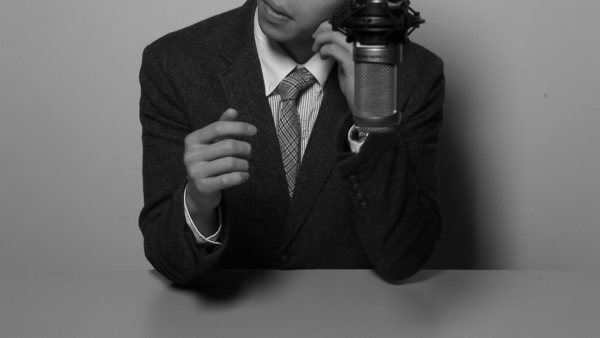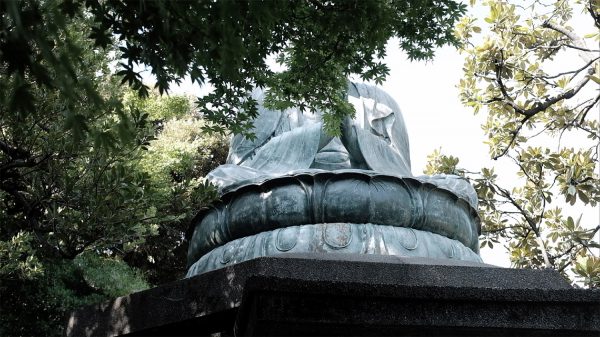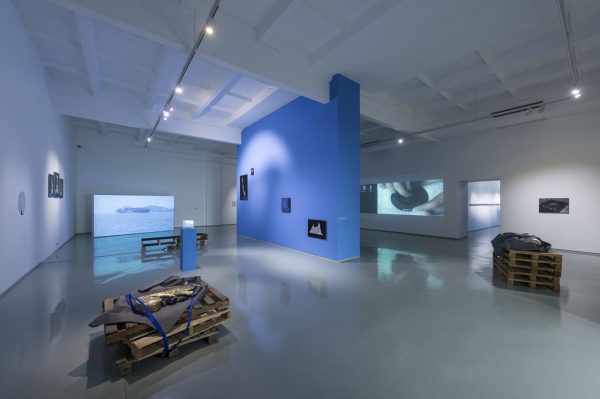李繼忠 LEE Kai Chung
李繼忠的的研究式創作主要關於歷史及編纂,系統和意識形態。
從早年開始,李氏有感於香港歷史檔案管理上乏善足陳;其後他發展以檔案研究方法為基礎延伸至創作與研究實踐。李氏透過一系列研究、社會參與及行動介入來回應歷史論述,以個體實踐作為對政治與藝術的轉化。除了個人創作外,未來致力建立不同的公共檔案庫。
李氏於2017年開展了六個以「遷移與離散」作命題的相連項目系列——在泛亞洲脈絡中的歷史與社會意涵為基礎,探索人口與物質流轉,以至地緣政治論述。因為需要親身體驗遷移的身心狀態,李氏自2020年開始持續地在路上。該系列的第一部分《復還、繕修和進退維谷》(2017-19)審視香港公共雕像的物質和意識形態轉變;第二部《通向深海的狹道》(2019-20),是關於在香港日據時期,香港和廣東省的居民被迫流離失所,其後發生了南石頭事件。其後的項目分別是:第三部:《流亡影院》(2020 -);第四部《無限列車》(2021-);第五部:《相思公園》(2022-);第六部:(待定)(2020-30)。此系列亦於2022年開始以公共檔案庫的形式呈現。
在李氏的長期研究項目《人人檔案》,他跟不同的政府機構展開對話與協商,以探討歷史檔案在社會政治架構上的狀況;他於2016年正式成立獨立團體「人人檔案」,把歷史和檔案議題的創作延伸到合作企劃、教育與出版。
李氏和策展人沈軍於2020年創立了《彳亍以行》——一個探討公共領域中藝術家檔案、思想碎片與生存/工作方法的網絡檔案庫。
李繼忠於2020年獲亞洲文化協會頒發Altius Fellowship,並於2018年獲香港藝術發展局頒發「2017 藝術新秀獎(視覺藝術)」。近年展覽包括: 《Internationale Kurzfilmtage Winterthur》(2021)(溫特圖爾, 瑞士)、《離岸之歌》(2021) (時代美術館:廣州,中國)、《進退維谷》(2020) (蜂巢當代藝術中心:北京,中國)、《Landskrona Foto》(2020) (蘭斯克魯納,瑞典)、《赤字團》(2019)(長征空間:北京,中國)、《Seoul Mediacity Biennale 2018》(2018) (Seoul Museum of Art:首爾,南韓)、《第12屆上海雙年展:禹步——面向歷史矛盾性的藝術》(上海當代藝術博物館:上海,中國)(2018)、《造動: 2015 亞洲藝術雙年展》(2015) (國立臺灣美術館:台中,台灣)。
LEE Kai Chung performs artistic research on historical and historiography, systems, and ideology.
In his early years, Lee was inspired by the lack of proper governance over public records, then he develops his archival research methodology as his key artistic practice. Through research, social participation and engagement, Lee’s work resonates with historical narratives, which demonstrates that individual gesture as a transition between politics and art.
In 2017, Lee initiated a hexalogy of projects that are under the theme of ‘Displacement and Diaspora’ – to take a departure from the socio-historical implication under the Pan-Asia context, the series examines human dispersion, material circulation and their geopolitical relations. In order to experience both the mental and physical state of displacement, Lee has been constantly on the road since 2020. The first in the series, The Retrieval, Restoration and Predicament (2017-19) examines the material and ideological transition of public statues in Hong Kong; the second, The Narrow Road to the Deep Sea (2019-20), scrutinizes the refuge in Hong Kong and Guangdong during the Japanese occupation period that later led to the Nanshitou Incident. The rest of the series are as follows: the third: Theatre Exile (2020-); the fourth: The Infinite Train (2021-); the fifth: The Longing Park (2022-); the final: Title to be confirmed (2020-2030). The series will also be represented as a social archive in 2022.
Lee’s ongoing research project Archive of the People addresses the political standing of documents and archives in the social setting. In 2016, Lee established the collective ‘Archive of the People’, which serves as an extension of his personal research to collaborative projects, education and publications.
In collaboration with curator Shen Jun, Lee founded StepBackForward.art in 2020, an online platform about artist archive in the public domain, fragmented thoughts, and artist methodology.
Lee received Altius Fellowship from Asian Cultural Council in 2020 and the Award for Young Artist (Visual Arts) from Hong Kong Arts Development Council in 2018. Recent exhibitions and projects include “Internationale Kurzfilmtage Winterthur” (2021) (Winterthur, Switzerland), “One Song is Very Much Like Another, and the Boat is Always Afar” (2021) (Times Museum: Guangzhou, China), “Predicament” (2020) (Hive Center for Contemporary Art: Beijing, China), “Landskrona Foto” (2020) (Landskrona, Sweden), “The Deficit Faction”(2019) (Long March Space: Beijing, China), “Seoul Mediacity Biennale 2018” (2018) (Seoul Museum of Art: Seoul, South Korea), “12th Shanghai Biennale: Proregress – Art in an Age of Historical Ambivalence” (2018) (Power Station of Art: Shanghai, China) and “Artist Making Movement – Asian Art Biennial 2015” (2015) (National Taiwan Museum of Fine Arts: Taichung, Taiwan).
為遷移作準備
雖然在處理《彳亍而行》和一眾同儕的檔案時必須井然有條,但到了書寫自己的方法時,我只能把鳳毛麟角、碎片式地記下,因為當中有不少也是無法好好梳理清楚的事,或者乏善足陳,譬如個人的經歷和性格怎樣影響我產生「吸引奇遇的體質」。以下是簡短的分享:
工作方法:
| 研究(不同的來源)
調研 記憶 身體感受 靈性與感觀覺察 |
> | 納入個人檔案庫 | > | 時機急切性 | > | 反覆地
研究 調研 創作 |
> | 展覽創作
出版 建立公共檔案庫 公眾項目 |
檔案成為方法
之前好幾年在藝術場合介紹自己,因為不善辭令,也不知怎樣透過三言兩語簡短解釋自己的工作,那我都會說自己是一個「處理檔案和歷史的藝術家」。我一直都從事檔案研究、介入檔案檔案系統以至歷史敘述透過怎樣的方法呈現和輸出。但在歷史研究中,「檔案」其實不是必然地存在,或是讓研究者可以接觸到。在那情況下,之前的那一套工作方法就失效了。那「失效」沒有為我帶來太多創作上的限制,反而迫使我領悟到,檔案研究的訓練可以培養我以有紀律而優雅的步伐生活下去,而檔案不再只是關於內容,而是接觸渠道和溝通,因為另闢蹊徑、打游擊式的方法有時會獲得更多。如果是創作和研究上遇到瓶頸,跟很多同儕一樣,把東西擱下,隔一段時間再回來,雖然時間不一定對我仁慈。
○ 過生活過得像一個人;
○ 對生靈和自然多關懷;
○ 學習多種語言;
○ 儘量每天曬太陽。有一次因為曬足了太陽,以後的一個星期心情也很好。
合作
成為全職藝術家後,我訓練自己在高工作強度、集中度和速度中生存下來,但那不可以對應所有人。而跟同儕合作不是必然,反而是緣份,過去幾年深深體會到。合作的過程對我來說是一種學習,那不是謙虛,而是合作之所以是合作,那不應該存有強要對方改變的成份。不為難別人,也不委屈自己至關重要。所以怎樣達至到一個大家認同的舒適點也是合作中最重要的一環,我也在學習中。
○ 不跟不坦誠的人交往;
○ 跟善良的人合作與交流,互相提供到知識和心靈的養份;
○ 過得有尊嚴,同時確保其他人同樣有尊嚴;
○ 保持禮貌;
○ 見到不公平的事時,要挺起胸膛正面面對,同時正在慢慢學會聰明婉轉一點。
遷移
除了上述的自我梳理外,自去年起,我選擇了以「遷移」作為一個工作和生活方式。可能每一個月左右遷移一次。那之前多年來建立的工作節奏、資源、環境、語境一次過改變。
○ 遷移的前後,需要思考有什麼需要帶走,因為行李空間有限,不是緊急和必要的全部留下。以往在工作室中各種的器材與工具都齊全,現在多利用環境的便利,減少對器材和工具的依賴;
○ 訓練自己適應不同的工作環境,例如交通工具上、咖啡廳、湖邊、家、別人的展覽中等等;
○ 在疫症蔓延後,那不流動性進一步促使我思考以往的工作方法。以往我的工作必須牽涉大量的跨國旅行,我需要考慮的只是研究或創作資金、時間的問題;2020年後,要顧全的變得多層次,譬如會否一個決定而跟伴侶、家人、朋友的隔絕,同時也要準備在路上有突發事件,隨時有心理準備去應變(有一次在途上,因為某地區爆發疫情,必須立刻更改路線)。
行走
我喜歡走路,走路的過程通常會遇到了各種的情況/意外,也看到一些其他的東西(那些可能是普通人不喜歡的)。最近幾年發現體力有嚴重下降的跡象,雖然生理循環比一般人還要快,但受傷了回復得比較以前慢了。為了讓我日漸衰老的身體可以承受我無情的鞭撻,我必須保持一個很有紀律的生活,也要花時間聆聽自己的身體。在於我而言,肉體與精神是緊緊相連,除了行走外,久坐、長考、閱讀、研究和文書工作也依賴體力。有好一段時間因為沒足夠體力處理壓力,情緒也較易波動。
○ 我每天鍛煉,做負重與帶氧運動;
○ 每天保持早上8時起床(維持了8-9年),我想調整到7時。零晨1點前入睡;
○ 最喜歡的是做波比跳(Burpee)100次,每次做完心情都很暢快。但因為最近開始持續的遷移,我剛買了一張旅行用的瑜珈墊,可讓我在途上也可鍛煉。
○ 養眼,減少用手機;
○ 戒酒。
行走方法
我因為左耳天生聽力有缺憾,所以對聲音有時不太敏感,有時就過份敏感,因為某些聲音會令到我頭痛欲裂。相反我就擁有很好的視力,對捕捉一些視覺細節比較有信心。
○ 有時候我進行田野調查時,首先會規劃好一條路線,然後沿著路線放開、擴大觀能感應,再捕捉所有細節;
○ 或是我根據某一條地理路線,規劃好後必須要走完,例如現在我關注的猶太歐洲難民來上海的路線,和日本在二戰時建立的大東亞縱貫線鐵路等等;
○ 或者大概知道一個區域,然後進行Drifting;
○ 另外一種就是點對點的進行調查。那乏善足陳,皆因是目標為本地希望接觸過某些人、事、建築,或是透過訪談或是當地調查獲得一些資訊;
○ 時間,有時必須要在一個非常特定的時間到達當地;
○ 另外就是為自己設計一些小練習,必須要透過身體行走去完成。
情緒與精神性
在行走、調研與檔案研究的過程中,我都很依賴我對於情緒和精神性的感知能力,雖然聽起來有點怪力亂神,但我就是感受到(我也沒辦法)。偶爾可以接通,也會產生一些連鎖反應。因為有時那些情感/緒不是由我去尋找,而是她/他/它找上了我。那種事一定有一種原因,I do not have to make sense of it, 就好像曾經在一個核彈地下防空洞中,我被「痛楚」穿透我身體一樣,不用太多解釋。如果我無法完成了那個「因果」,我就做得不對了。所以我由始至終都不用逃避或消化。
○ 在某一些精神狀態之下,我很喜歡徹底的黑暗。譬如,在月光的映照下,走進黑暗的森林裏,身體慢慢作出了反應,那一刻有一種平靜而安全的感覺。我也寫進了作品之內。
○ 有時我會投入太深在研究對象的語境中,尤其是關於戰爭與苦難。基本上不用從中走出來,好好地擁抱和感受就好了。
文字
我曾在課堂上跟同學玩一個書寫藝術作品簡述的遊戲:
1. 禁止用「形容詞」與「-ism」來描述作品概念;
2. 禁止說「我」;
3. 說完一次後,改為盡量用「形容詞」和「專有術語」來陳述概念。
我們遇上了困難,發覺平時用上了太多抽象的文字,而行話(jargon)的疊加無助於令人了解。我們的工作不只是令到自己、圈內人明白或似懂非懂,而是尊重語言作為溝通工具,因為最艱澀難懂的概念和感受也可用簡練的文字表達。
Prepare for Displacement
I have to be very organised when working on the records of my peers in StepBackForward.When it comes to writing about my own methodology, I can only write down a few bits and pieces, as there were many things that I couldn’t think through properly, or they are not worth telling, such as how my personal experiences and personality influence my ‘instinct to attract special encounters’. The following is my brief sharing:
Methodology
| Research (in different sources)
Field research Memory Embodiment Spiritual and Perceptual sensation |
> | Accession to my personal archives | > | Timing
Urgency |
> | Repeatedly
Research Field research Make art |
> | Exhibition making
Publication Public Archive building Public Programs |
Archive as a method
When I introduced myself in the art scene for a few years, I would describe myself as ‘an artist working with archives and history’, because I am not very good with speech and I did not know how to explain my work briefly in a few words. I have always been involved in archival research, encounter archival systems, and in the ways in which historical narratives are presented and delivered. But in historical research, ‘archives’ do not necessarily exist or are accessible to researchers. In that case, the previous way of methodology is no longer valid. Rather than imposing too many creative constraints, that ‘failure’ forced me to realise that archival research training could foster a disciplined and elegant pace of life, and that archives are no longer just about content, but about accessibility and communication, because I have to adjust my practice, somehow guerrilla approach can be more rewarding. If there is a bottleneck in my creativity or research, like many of my peers, I put things on hold and come back to them after a while, although time is not always kind to me.
○ Live like a human;
○ Care more about the living and nature;
○ Learn multiple languages;
○ Get as much sunlight as you can every day. Once I get enough sunlight and would be in a good mood for a week afterward.
Collaboration
I used to train myself to live through high levels of intensity, concentration, and speed after being a full-time artist, but that doesn’t essentially work for everyone. Working with peers is not a given, but rather a matter of fate, as I have experienced over the past few years. The process of collaboration has been a learning experience for me, not in a modest way, but this is what it is, and should not force the collaborators to change. It is important not to make things difficult for others, or to compromise ourselves too much on the other hand. So how to strike a balance is one of the most important aspects of collaboration, and I am still learning.
○ Do not associate with dishonest people;
○ Work and interact with kind people, nurturing each other with knowledge and spiritual nourishment;
○ Live with dignity while ensuring that others do the same;
○ Be polite;
○ When facing injustice, always stand up to it, while slowly learning to be wiser and more tactful.
Displacement
In addition to the above self-examination, since last year I have been consistently ‘on the road’, as a way of working and living. Maybe once a month or so I move from one place to another. It brings a radical change to my working pattern, resources, environment and context that I had built up over the years.
○ Before and after moving/traveling, I need to think about what I need to take with me, as I have limited luggage space, so I have to leave everything that is not urgent and necessary. In the past, I had all kinds of equipment and tools in the studio, now I capitalise the environment more to reduce my reliance on equipment and tools;
○ I train myself to adapt to different working environments, such as on commute, in cafes, by the lake, at home, in other people’s exhibitions, etc;
○ After the spread of the pandemic, immobility has further prompted me to rethink my practice. In the past, my projects involved a lot of cross-country travel, and all I had to consider was just funding and time for research or creative work; after 2020, I have more versatile thinking, such as whether I will be isolated from my partner, family and friends by a decision, and also be prepared for unexpected events on the road (once I had to change my itinerary immediately because of an outbreak in a certain area).
Walking
I like to walk a lot, and I usually encounter various situations/accidents and see things (that the average person might not like) on my walks. In the last few years, I have noticed a significant stamina drop, although my metabolism is faster than average, I recover slower from injuries than before. In order for my aging body to withstand my relentless abuse, I have to maintain a disciplined life and take time to listen to my body. For me, my physicality and mentality are closely intertwined, and apart from walking, sitting, long thinking, reading, research and clerical work also depend on my physical strength. For a while, I was emotionally volatile because I did not have enough energy to deal with stress.
○ Exercise daily, both weighted and aerobic exercises;
○ Wake up at 8 am every day (last for 8-9 years) and I would like to adjust to 7 am. Go to bed by 1 am;
○ My favourite exercise is Burpee by 100 reps. I always feel good afterward. But as I’ve recently started to travel a lot, I’ve just bought a travel yoga mat so that I can exercise on the road;
○ Take good care of my eyes and reduce using mobile phone;
○ Quit drinking.
Walking methods
I have a congenital hearing impairment in my left ear, so sometimes I am not very sensitive to sound and sometimes I am overly sensitive because it causes me headaches. On the contrary, I have very good eyesight and I am more confident in capturing visual details.
○ Sometimes when I have field research, I first plan a route and then open up along it, expand my senses and then capture all the details;
○ Or I plan a certain geographical route and then I have to complete it, such as the route taken by the Jewish refugees from Europe to Shanghai, and the Greater East Asia Railway built by Japan Empire during World War II;
○ Or to know roughly an area and then go drifting;
○ The alternative is point-by-point field research, which is a fairly common practice, as the goal is to acquire information through meeting people, encountering events and architecture, or interviewing local people.
○ Time is crucial, sometimes it has to be in the area at a very specific time.
○ Design short exercises for yourself that you have to complete through physical walking.
Emotion and Spirituality
During my walks, field research and archival studies, I rely on my ability to perceive emotions and spirituality, and although it may sound strange, I just feel it (I can’t help it). Occasionally, I make connections and there would be subsequent chain reactions. I do not look for them, but those feelings/emotions come to me instead. There must be a reason for that, I do not have to make sense of it, as if I was once in an underground nuclear bomb shelter and the ‘pain’ penetrated my body, without much explanation. If I am not part of that ‘karma’, I’m not doing it right. So, I don’t have to run away or fully understand it all the time.
○ In certain mental states, I enjoy complete darkness. For example, walking into a dark forest in the light of the moon, my body slowly reacting, there is a sense of calm and security at that moment. I have incorporated this feeling into my work;
○ Sometimes I get too deeply involved in the context of the research subject, especially in relation to war and suffering. Basically, I don’t have to come out of it, I just embrace it and feel it.
Text
I once had an in-class exercise with my students, to write artwork statement:
1. Prohibit the use of ‘adjectives’ and ‘-ism’ to describe the concept;
2. No “I” in the statement;
3. After saying the statement once, switch to using ‘adjectives’ and ‘terminology’ to describe the concept as much as possible.
We encountered the difficulty of using too many abstract words in general, and repeating jargon does not help to make sense of it. Our job is not just to let ourselves, the art circle, be understood or seemingly understood, but to regard language as a tool for communication, where the most difficult concepts and feelings can be expressed in simple terms.
文章 Article
復還、繕修與進退維谷:戰爭中的物件、記憶與文獻 (節錄)
一般而言,我們對於「未來」有預期,就好像明天要在下午開一個會,然後在日曆上標記;而「過去」就透過文字、檔案、錄像、影像等形式記錄下來,時間本無形,物質某程度代替或代表了時間的推移。如波里斯·葛羅伊斯 (Boris Groys)在所言[1]Boris Groys. Particular Cases (Steinberg Press, 2016), p.157,在現代社會中物質主導想像,人們過份着眼於「物」作為一種對於「時間」的憑証,繼而對「現在」的變得不敏感,因此歷史敍述就像是尋回在物質生產中失去的「時間」。「現在」好像淪為「過去」與「未來」之間的過渡。現把過渡作為一種哲學性的討論,過渡是一個過程還是結果?
當筆者在研究檔案和創作作品時,常思考究竟我們對於「過渡」的覺察是來自於「已經過渡了」的那一刻 (中文文法中沒有這個時式,在英語中是「過去完成式」),還是我們預期「將會有由一個階段轉換成另一個」(未來式:還未被完成或確定)?那麼「過渡」的現在式是甚麼?審查事件正好是當頭棒喝 —— 當用香港人的角度談論自身身份成為禁語時,我們或主動或被動地融合在過渡的結果中,或卡在進退兩難的狹縫裏;我們有意識自己身處過渡的洪流,或是推動者,在筆者而言,藝術之於歷史,正是在有限時間空間內處理過渡的「現在式」和「現在進行式」,並嘗試敲鑿出斷層,最後製造複數的「現在」(presents)。
文章發表於《無法憶起 怎樣到達這裏》(香港:Mosses,2020)。
The Retrieval, Restoration, and Predicament: Objects, memories and records in wartime (Excerpt)
Generally speaking, we have expectations for ‘the future’, like we need to have a meeting tomorrow afternoon, so we mark it in our diaries; and ‘the past’ is recorded in words, files, videos, and images; time being formless, its passage is replaced or represented to an extent by the material. As Boris Groys says[2]Boris Groys. Particular Cases (Steinberg Press, 2016), p.157, in modern society material trumps imagination, people are too focused on ‘things’ as evidence of the ‘time’ lost in creating them, and become desensitised to the ‘now’; the historical narrative then becomes like the recovery of the ‘time’ lost in producing materials. ‘Now’ seems to become the transition from ‘the past’ to ‘the future’. Now examine transition as a philosophical concept – is it a process or a result?
While I was researching the archives and creating the work, I often wondered if our perception of ‘transition’ comes from the moment of realisation that ‘things have changed’, or do we anticipate ‘some future period of time will become another one’? What is the present tense of ‘transition’? The censorship incident was a wake-up call – when it is forbidden for Hong Kong people to talk about their own identity, we actively or passively merge into the result of the transition, or get stuck in a very narrow gap; and when we are aware, we are part of the great transition, or pushing it; as for me, the practice of art as history is, within the limits of space and time, dealing with the ‘present tense’ and ‘present progressive tense’ of transition, and trying to force a rupture, and finally create multiple ‘presents’.
Essay published in I Could Not Recall How I Got Here (Hong Kong: Mosses, 2020).
- 黃康迪 WONG Hong Tik
- 陳毅哲 CHEN Yi Che
- 馮以丹 Edy FUNG
- 李劻華 Khris LEE Hong Wah
- 詹昫嵐 Liv TSIM
- 梁慧欣 LEUNG Wai Yan
- 梅愷盈 MUI Hoi Ying, Carol
- 黎穎虹 LAI Wing Hung
- 張綺君 CHEUNG Yee Kwan, Sonia
- 強天锴 QIANG Tiankai
- 朱建林 ZHU Jianlin
- 鄺詠君 KWONG Wing Kwan
- Iris WONG
- 楊思嘉 Sijia YANG
- 張文智 ZHANG Wenzhi
- 盧韻淇 LO Wan Ki
- 馮靖嵐 FUNG Ching Laam
- 張亦勤 CHEUNG Yick Kan
- 葉雯 Manny YIP
- 無碼計劃 Project NoCode
- 劉菁兒 LAU Ching Yee, Cathleen
- 余榮基 YU Wing Kei, Rik
- 劉暢 LIU Chang
- 陳翠雯 CHAN Chui Man
- 許芷瑋 HUI Gi-Wai, Echo
- 譚綽琳 TAM Cheuk Lam, Jessie
- 鄭天依 ZHENG Tianyi
- 王昱珊 WONG Yuk Shan
- 李曉巧 LI Xiaoqiao
- 屈鍵晴 WAT Kin Ching
- 劉清華 LAU Ching Wa, Jess
- 曾淑芬 TSANG Shuk Fan, Tracy
- 張紫茵 Dorothy CHEUNG
- 林琬晴 LAM Yuen Ching, Esther
- 彭景 PENG Jing
- 馮以力 FUNG Yee Lick, Eric
- 張家樺 Janice CHEUNG
- 鄧廣燊及袁雅芝 TANG Kwong San & YUEN Nga Chi
- 潘美義 POON Mei Yee
- 徐然 XU Ran
- Florence LAM
- 朱穎琳 CHU Wing Lam, Kelly
- 黃姬雪 WONG Kei Suet, Ice
- 余淑培 YU Shuk Pui, Bobby
- 鄧卓敏 TANG Cheuk Man, Penelope
- 李珮瀅 LEE Pui Ying, Hiya
- 吳咏詩 Wing Sze NG
- 張國樑 Weera It ITTITEERARAK
- 黃詩慧 WONG Sze Wai
- 鄭裕林 CHANG Yue Lam
- Landescape1823
- 鄭虹 CHENG Hung, Dony
- 陳庭 CHAN Ting
- 馮倚天 FUNG Yee Tin, Thomas
- 譚敏晴 TAM Man Ching, Michelle
- 朱湘 ZHU Xiang
- 程新皓 CHENG Xinhao
- 沈軍 SHEN Jun
- 梁望琛 LEUNG Mong Sum, Joseph
- 李繼忠 LEE Kai Chung



